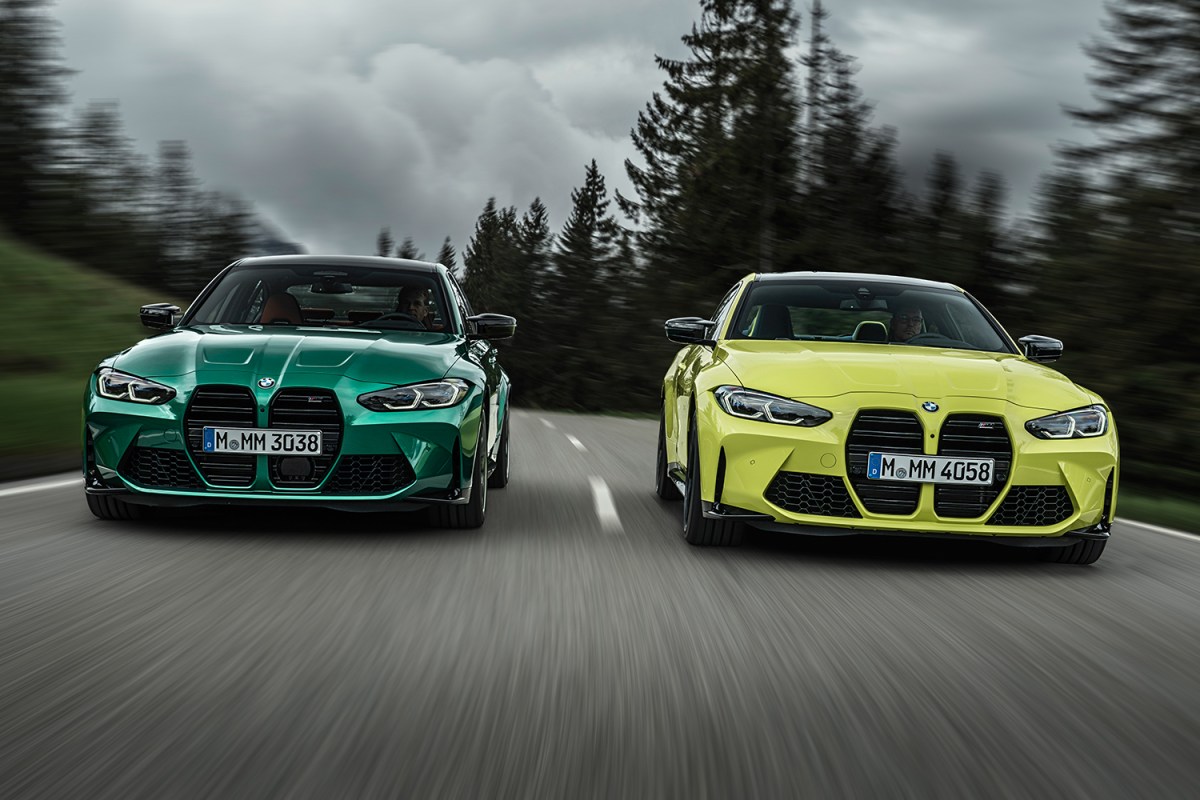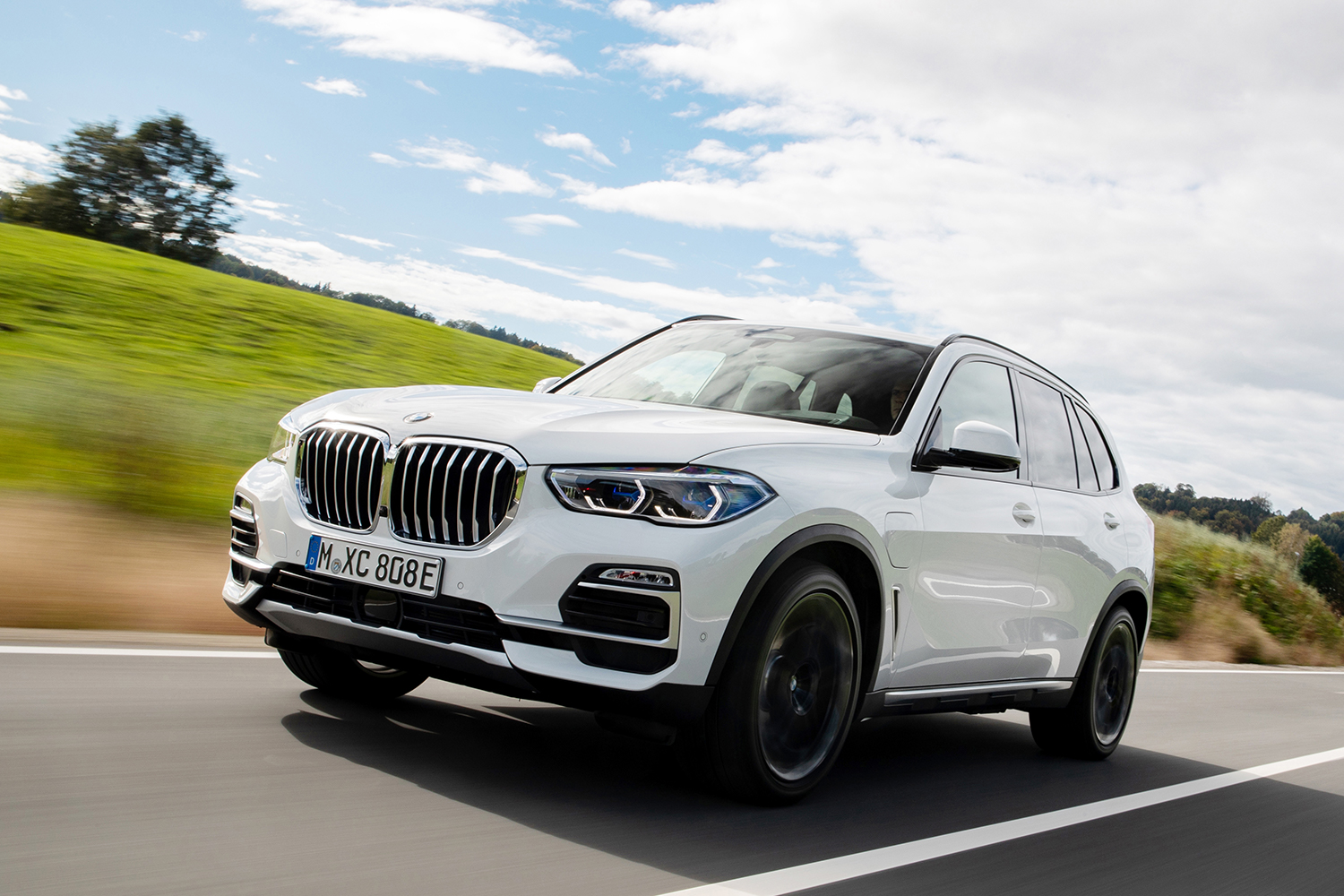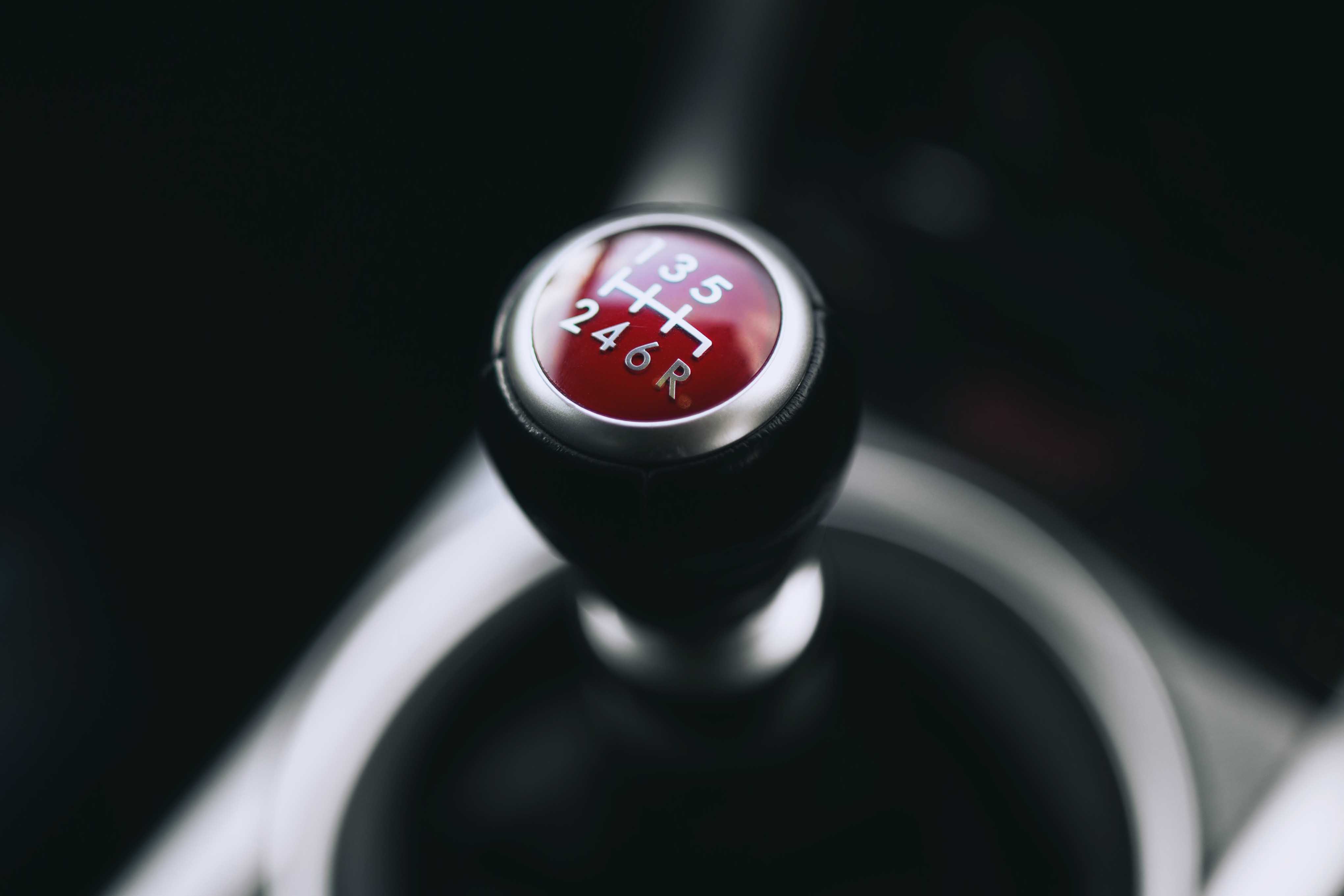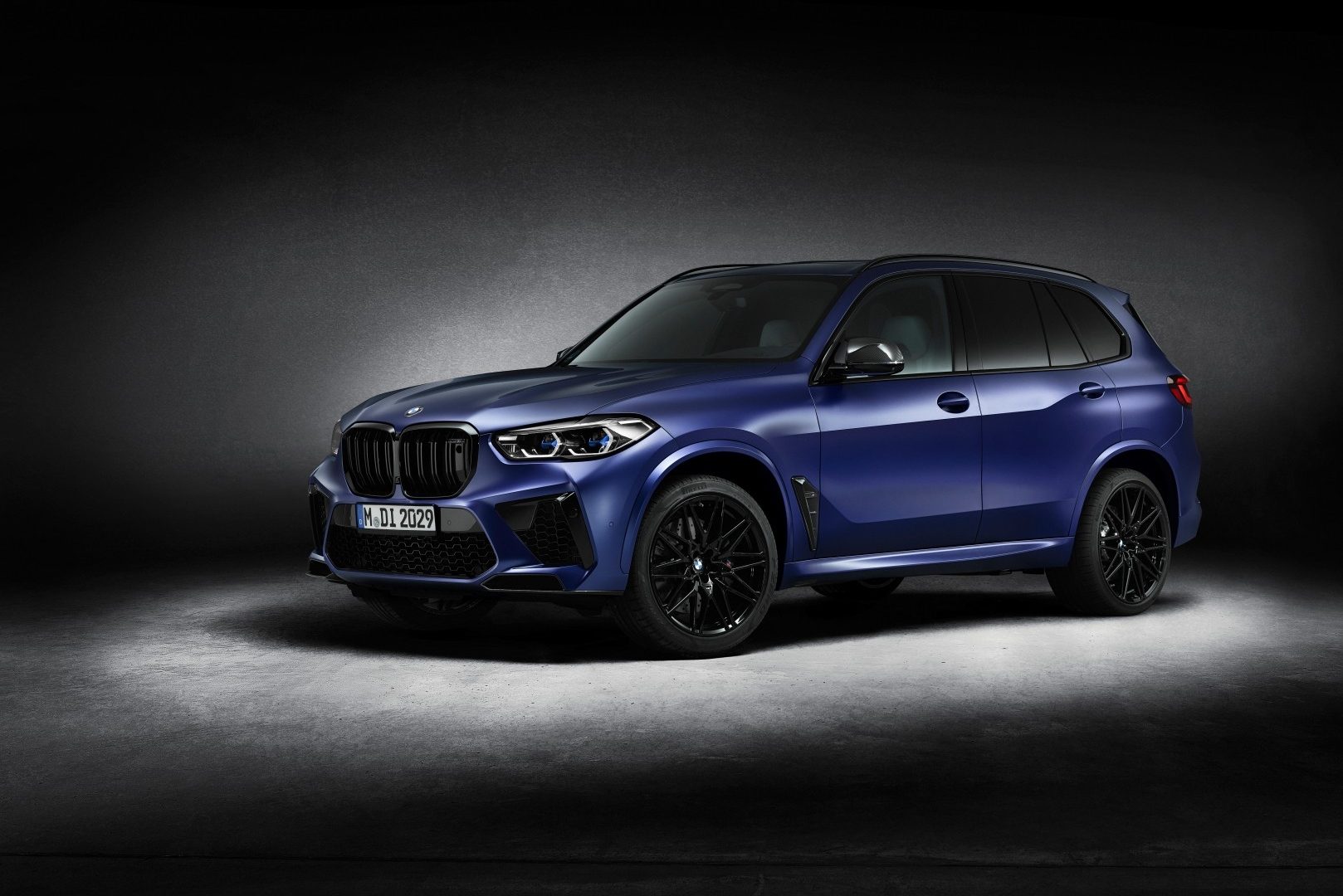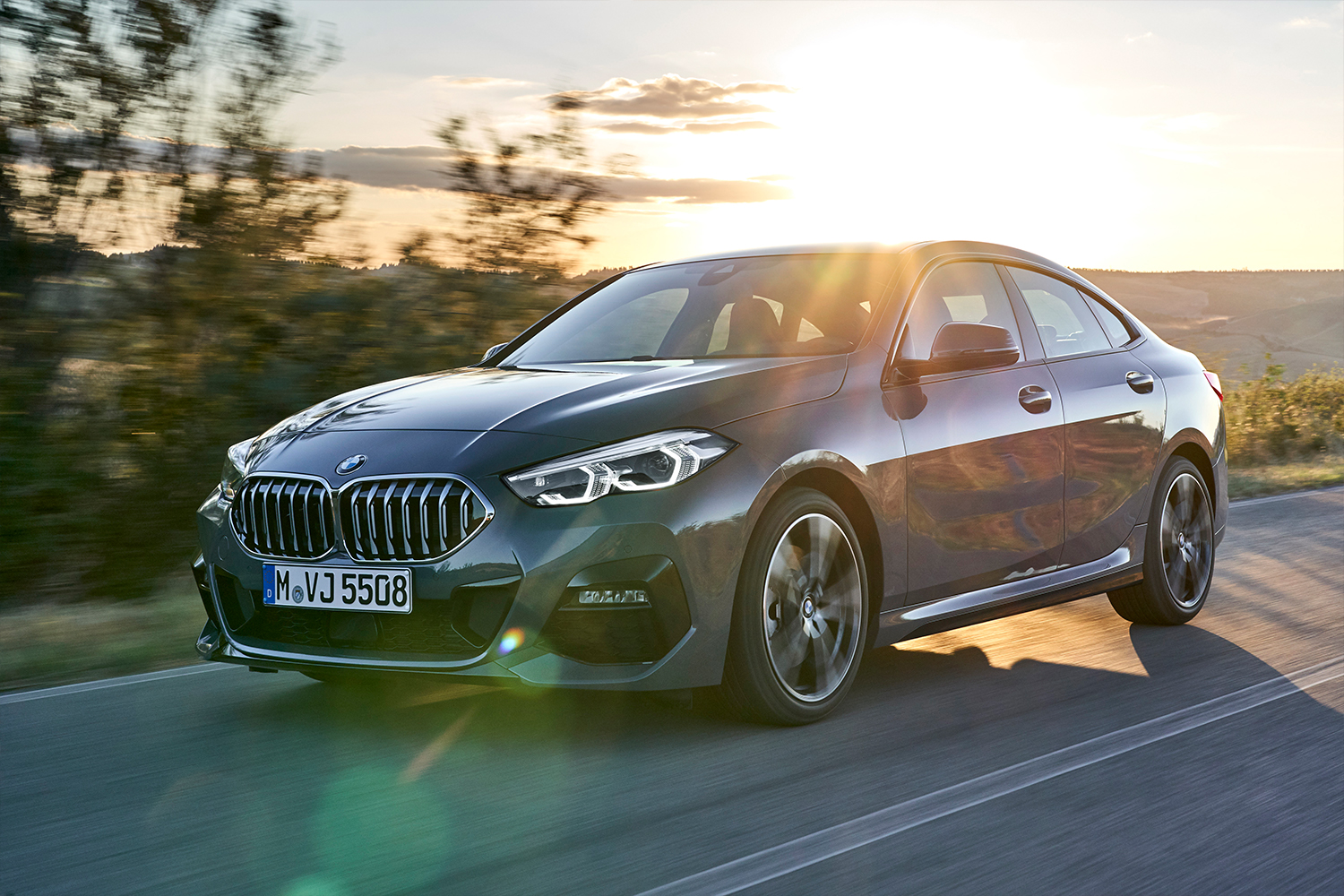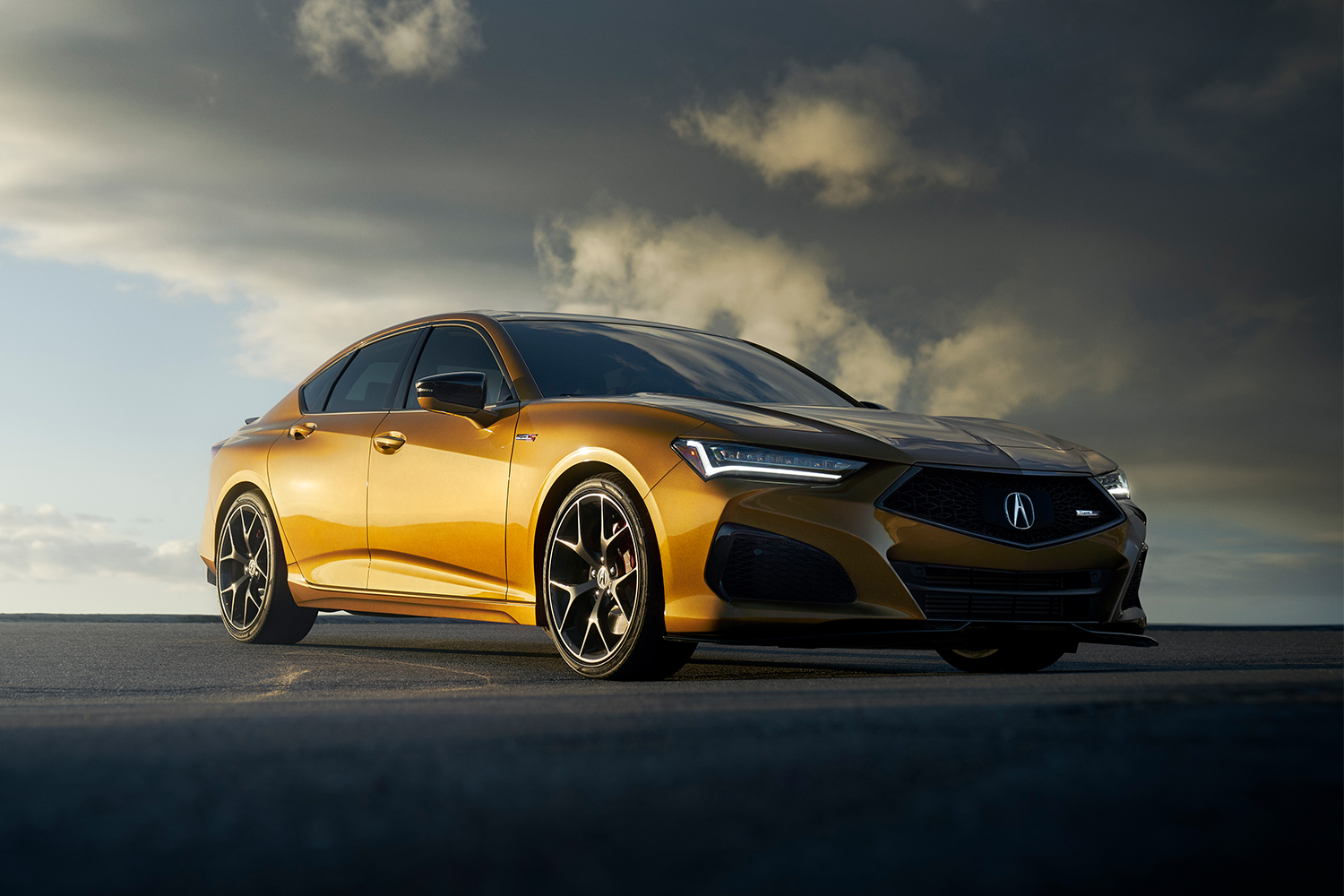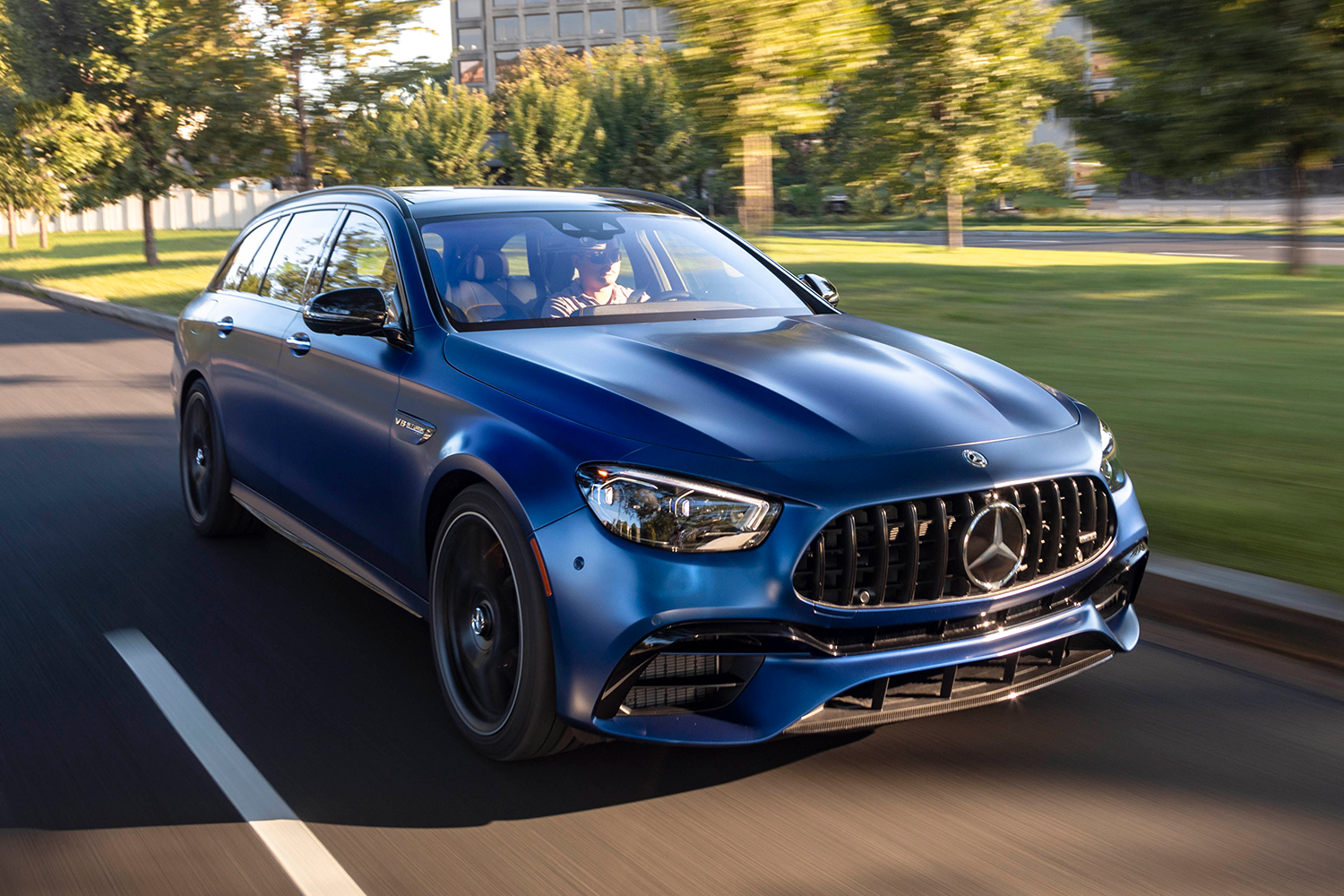For decades now the tip of BMW’s high-performance spear has been the M3, the hottest version of its best-selling sports sedan. Complemented by the M4 coupe (which joined the party in the mid-2010s, absorbing the two-door M3 into its ranks), these two vehicles have represented the best combination of speed, prestige and practicality in the automaker’s lineup and have long served as the stepping stone to more expensive fare from the Bimmerhaven factory.
For 2021, BMW has redesigned each model and added a few tweaks to their respective M formulas. There are now two specific tiers of M3/M4: those equipped with a manual transmission (base) and those that come exclusively with a new automatic gearbox (Competition). The approach — and the mechanical details of the Competition — represent a distinct break with the past and present longtime fans and first-time buyers alike with a choice that will go a long way towards determining what their experience behind the wheel of these machines is like.
Which version of the 2021 BMW M3 and 2021 BMW M4 is right for you? After two weeks spent living with the exclusively-six-speed M3 and the auto-only M4 Competition back-to-back, it’s clear that the automaker’s decision to split its M ranks was an inspired one that speaks directly to the changing preferences of high-performance luxury buyers.
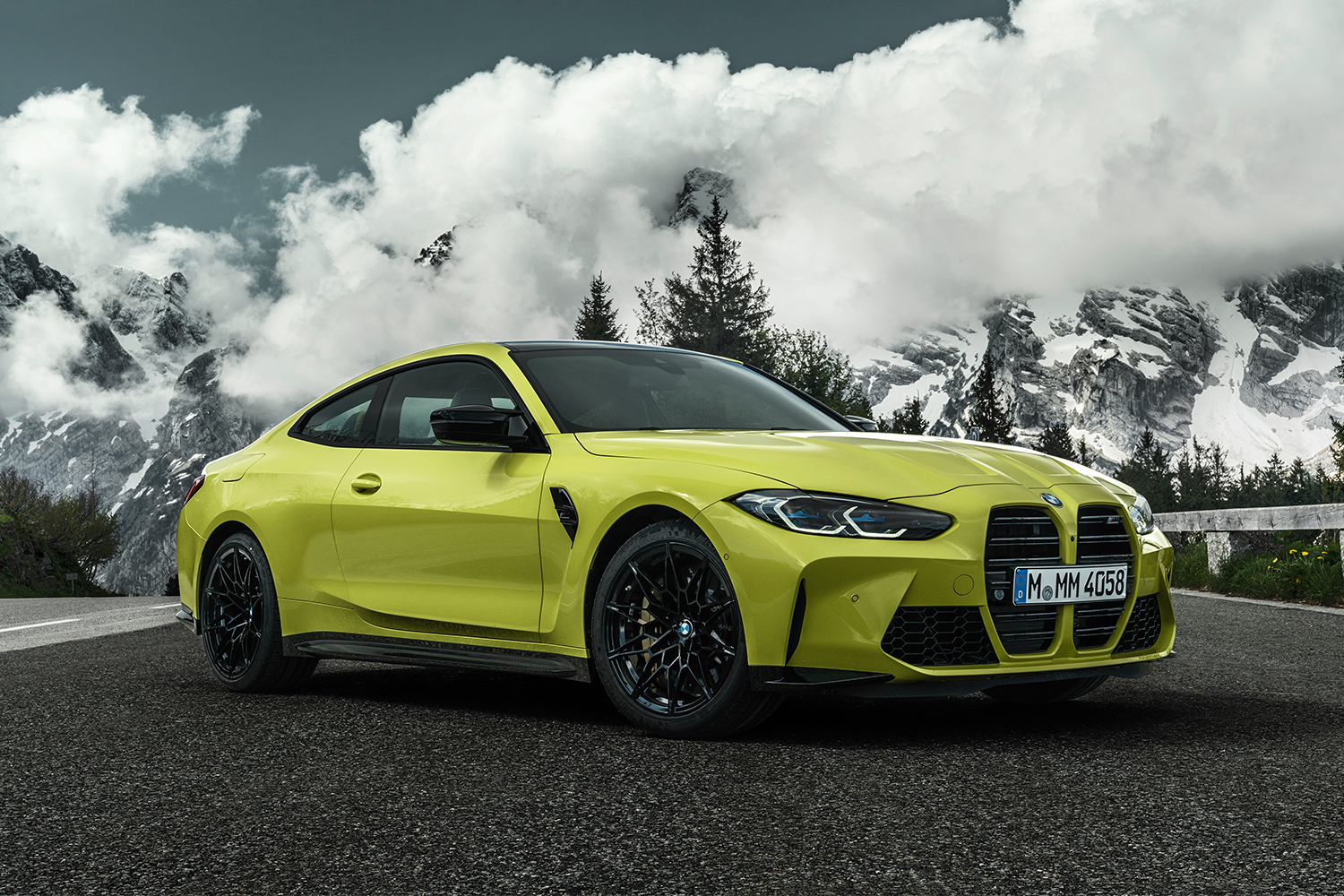
How Do You Like Your Horsepower?
Both the BMW M3 and M4 start out with the same 3.0-liter inline six-cylinder engine that’s been turbocharged to deliver 473 horsepower and 406 lb-ft of torque. Keen eyes will notice the nearly 50-pony bump versus the previous-generation M cars, but that’s not the only power boost available for 2021; the Competition package adds an extra 30 horses and 73 lb-ft of torque for a total of 503 and 479, respectively.
What, objectively, does that extra grunt get you? Should you choose to pay the roughly $3,000 Competition premium over the base M3 ($69,900) or M4 ($71,800), it slices 0.3 seconds from the sprint to 60 mph, dropping the measure under the four-second mark thanks to the easier-to-launch ministrations of its eight-speed automatic transmission.
It would be wrong to focus simply on the numbers when comparing the two drivetrains, however. BMW’s decision to swap out last year’s fussy dual-clutch automated manual for a true, torque converter-equipped design has seriously civilized both M models. Whereas one previously had to tolerate jerky shifts and uncertain gear selection at lower speeds, the M4 Competition I sampled was remarkably smooth regardless of how little or how much I gave it the crop. Combine that with the plateau of extra torque covering for any perceived slip in swapping ratios from the ZF-designed autobox, and the overall drive is vastly improved.
Compare that to the standard M3’s six-speed shift-it-yourself setup and the difference in smoothness stands out far more than any on-paper power gap. While there’s nothing objectively wrong with BMW’s manual setup, it’s not quite content to deal with the drudgery of commuting, and it regularly reminds you of this fact. Shift action is somewhat vague moving from one gear to the next, and the clutch pedal isn’t easy to master when slipping off the line or aiming for a smooth 2-to-3 transition.
Still, this is the only stick shift available in the luxury sedan (or coupe, for that matter) sweepstakes, at least until Cadillac’s Blackwing rivals arrive for 2022. Manual box fans should be grateful that BMW has presented them with one final go-round before automatics become the sole order of the day from Bavaria as well. It’s a future that’s fast approaching, especially given that the auto option allows for the upcoming 2022 M3 and M4 to offer all-wheel drive for the very first time.
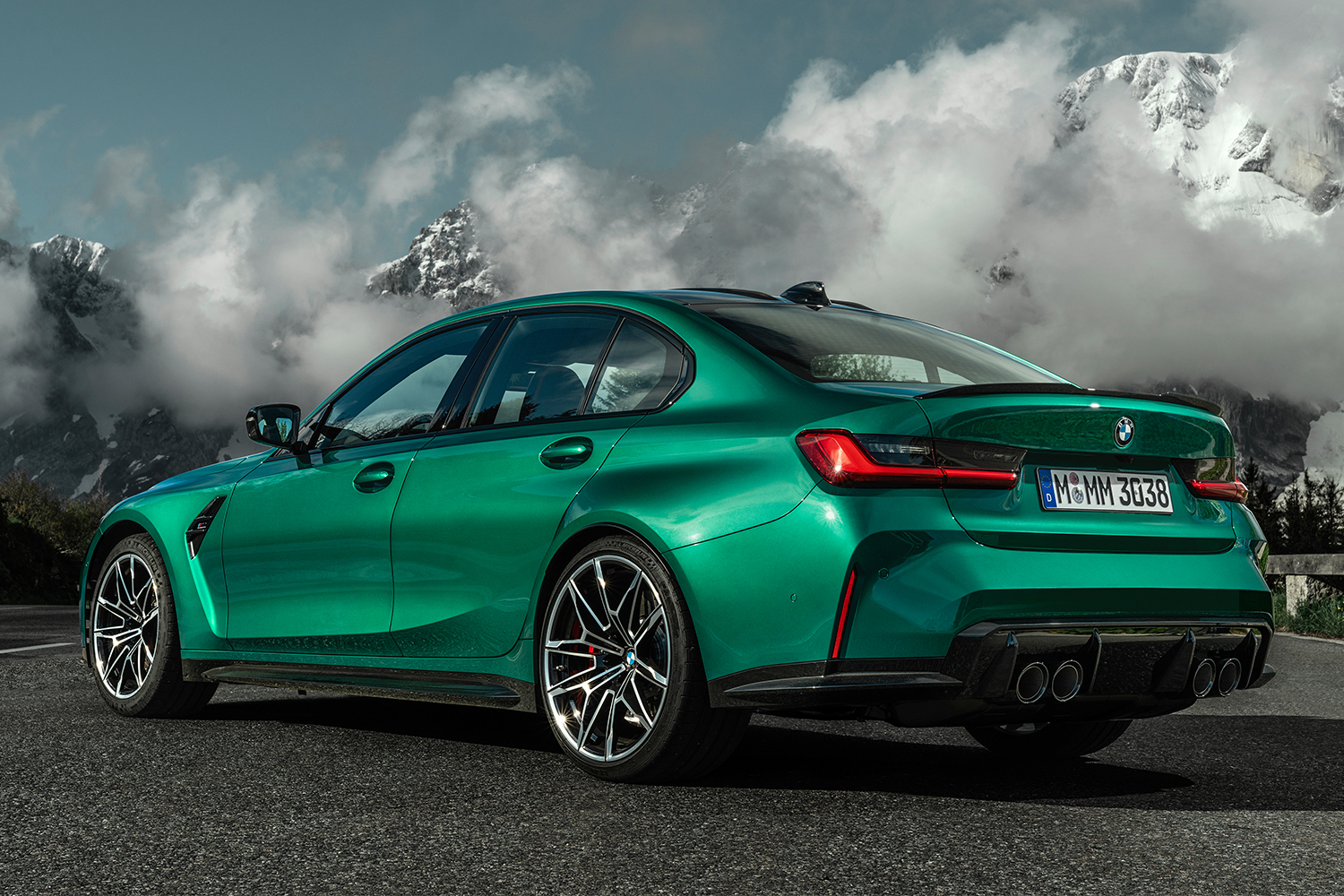
More Money, More Problems
Setting aside their transmissions and power packages, there’s not much else separating the Competition from the base M car. The M4 Competition I drove rode on a staggered wheel setup that was one inch larger front and rear compared to the M3, but there was no appreciable difference in either comfort or handling. Although steering isn’t as precise as one would prefer from a performance vehicle, body control is excellent and fast cornering remains predictable and compelling.
Both sedan and coupe are competent, composed speed experiences that ask little of drivers other than that they point, shoot and hold on for dear life as the twin turbochargers spool up. Each vehicle displayed fantastic amounts of mechanical grip, aided and abetted by an extensive suite of electronic controls and assists that could be programmed into two shortcut M buttons on the steering wheel for easy activation.
You’ll come to quickly appreciate that capability, as otherwise scrolling through the various suspension, exhaust and drivetrain settings on the center stack’s touchscreen screen can be overwhelming. The rest of the infotainment features are much easier to parse, with BMW’s iDrive continuing to be one of the best interfaces among high-end brands.
In terms of in-car comfort, it goes without saying that if you need a usable rear seat then you’ll want to avoid the M4 coupe’s cramped rear quarters in favor of the M3’s much more palatable back bench. In fact, the M3 gives adults of almost any size a fair shake in terms of leg and headroom, and is among the class leaders when it comes to sedans of its size.
You’ll also likely want to pass on the available M Carbon Package that my M4 tester was equipped with. In addition to exterior trim wrapped in the on-trend lightweight weave, it featured a pair of buckets outfitted not just with high-sided bolsters but a disagreeably placed carbon-fiber horn directly between the legs of the driver and front passenger. The end result? Bruised thighs from sliding over the unyielding material upon every entry and exit, not to mention reduced support and comfort compared to the M3’s much better standard sport seats.
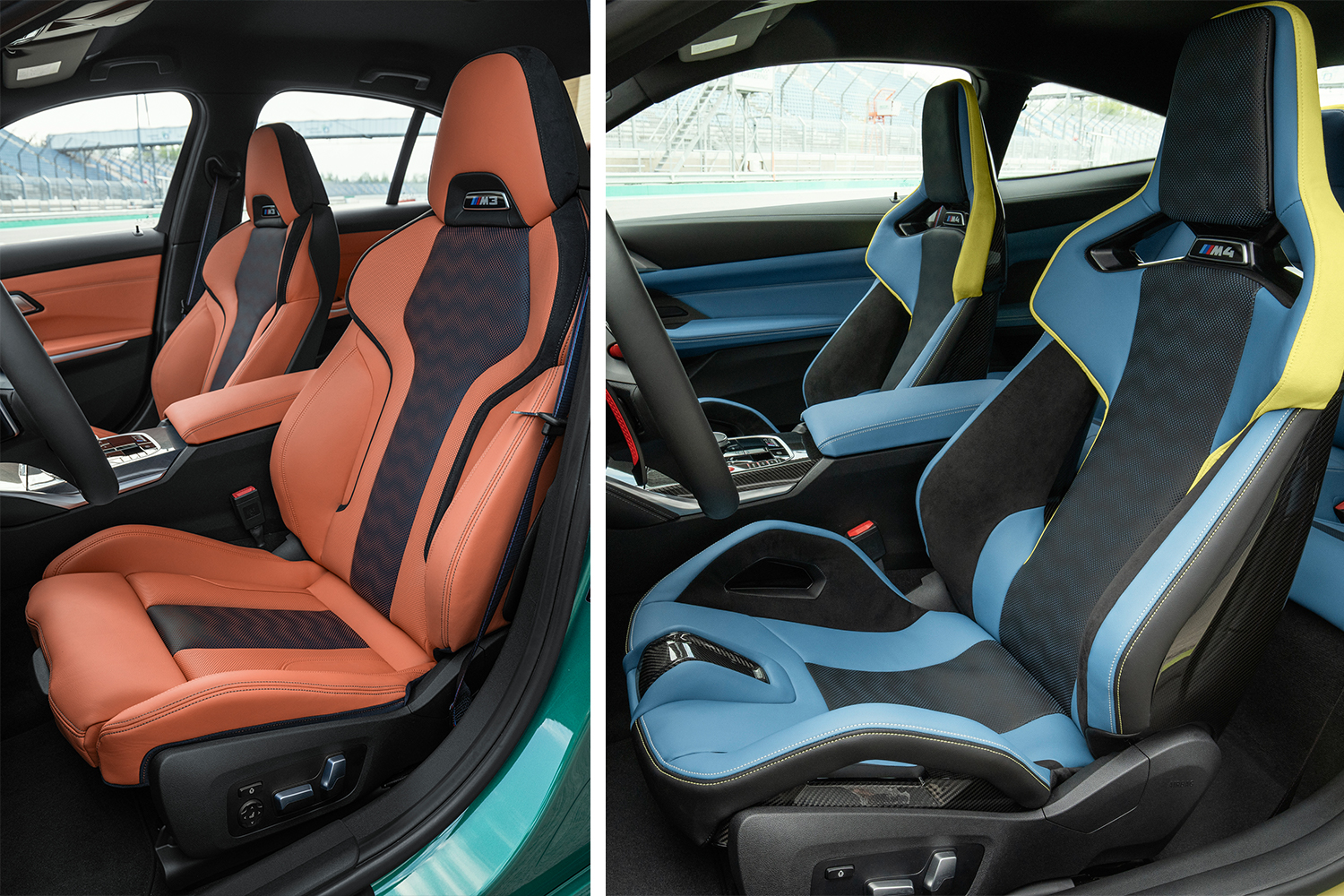
It’s No Competition
The M3 and the M4 represent two of BMW’s most important models. Their reasonably affordable pricing (for a luxury car), excellent performance and easy-to-live-with character have led to steady sales and strong loyalty from customers enamored of their low-compromise approach to sporty driving. Throw in their ability to double as track-day steeds, and the versatility of the sedan and coupe pairing is unimpeachable.
The 2021 redesign marks a return to form for the M cars after a few years spent wandering the dual-clutch wilderness while BMW decided just how hardcore a persona it wanted to present to well-heeled buyers. More palatable than ever, it’s clear that the company’s steering committee have tapped the Competition’s traditional automatic approach as the best path towards future profit, and after having driven both back-to-back it will be difficult for all but the most diehard manual transmission fans to disagree.
Faster, smoother and more than a bit of a bargain, the mightier Competition is a well-rounded choice for the vast majority of drivers whether found in two-door or four-door flavors. The six-speed car, on the other hand, is best appreciated as a final bow from a format that simply no longer feels like the best match for an automotive formula that’s outgrown its original motorsports roots.
This article was featured in the InsideHook newsletter. Sign up now.
